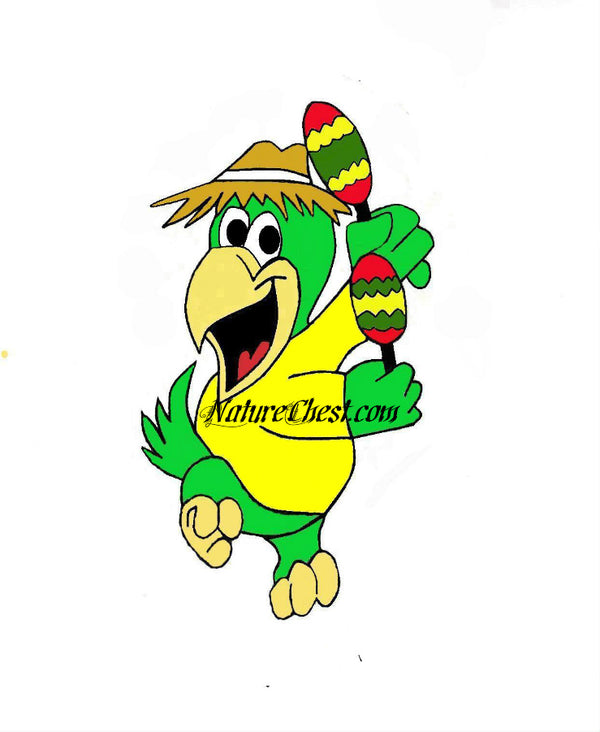How cold is too Cold for a Parrot?
Share

Parrots are tropical creatures right? Well yes, mostly, but not all parrots live in hot humid tropical conditions. Parrots such as Keas will thoroughly enjoy playing in snow. A few other parrots tend to be cold-hardy, such as Monk Parakeets (aka Quaker Parrots) and seem to survive quite well in cold northern climates in areas of North America.
However for this post I'd like to concentrate more on the "average" parrot sharing our homes and how they adapt to the colder winter months even though they live indoors.
Most parrots do in fact originate a few generations back from those warm and even sometimes hot tropical paradises. They have acclimated to living and sharing life with humans in typical homes where it's usually mild inside to even a little chilly at times during the winter months.
Parrots who live the majority of their time inside our homes adjust accordingly to our changing indoor temperatures quite well unless they have a health issue that requires more warmth and care.
Most large parrots and small birds adjust well as long as their indoor temperature stays steadily at about 66 to 70 degrees Fahrenheit. Obviously in the winter those indoor temps can fluctuate a bit more than usual and sometimes it's as simple as covering your bird's cage with a warm blanket or cover at night to help retain the daytime warmth overnight as well as making sure there are no air drafts on your bird. Drafts to avoid include heat vents blowing toward your birds. The blowing air even if it's warm air, is still a draft of air that cools quickly and can cause a health issue for any bird.
A bird's feathers are perfect insulators to help keep out the cold and help keep their avian bodies nice and warm. Those downy feathers help hold heat close to a bird's body and are an awesome insulation. With that info in mind, a bird who feather destroys or plucks feathers, may lack that extra insulation and may need a little extra help keeping warm. Hence the cage cover at night or a little extra heat in the room.
A bird that is fluffed is not warm enough and is fluffing it's feathers to try and stay warm. A bird that is holding it's feather out slightly away from the body and in a droopy manner, is too hot. So keeping a close eye your bird's body language will help you know when or if you need to adjust your room temps.
A bird will also use more energy keeping warm so increasing the diet in colder periods can be quite helpful for your bird. Unlike many mammals that doesn't mean adding more fat to the diet, instead adding more of your bird's nutritious diet will do it.
Although parrots are native to many hot tropical rainforests with temperatures in the 90's and humidity even higher at times, that does not mean you will need to keep your thermostat set on 90. Birds do well in more normal home temperatures of around 68-70 degrees if you maintain a consistent temperature or provide the extra warmth for your bird if you turn your thermostat down at night. Birds will acclimate to slightly cooler home temperatures if they are given time to acclimate.
Something to also remember is that a 2-3 degree change in temperature over a day usually has little effect on a bird, however as much as 5 degrees fluctuation over several days may cause your bird to begin a molt. So if you start seeing lots of feathers floating about you may want to evaluate your bird's winter accommodations to see if there is something you can change to help keep your bird's environment warm and steady.
I would love to hear any ideas and tips you have learned living with birds and keeping them warm and healthy during the colder winter months.

